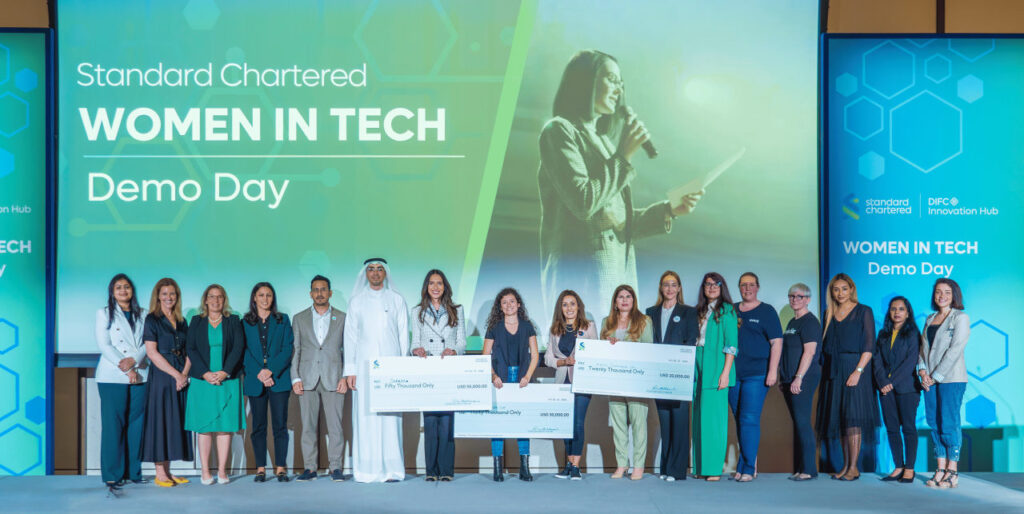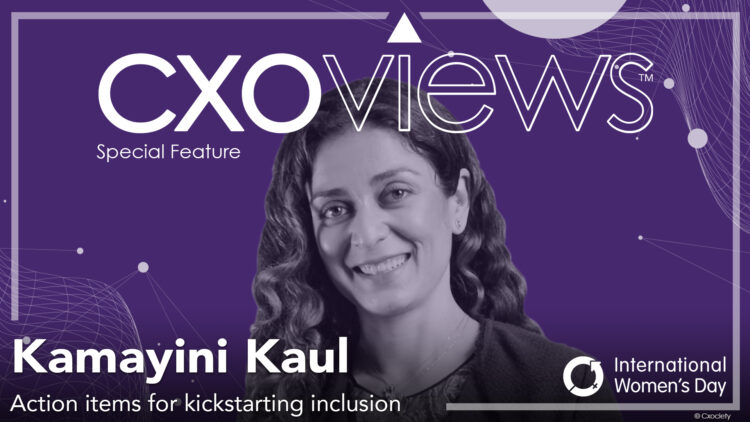In the World Economic Forum article, Centre for New Economy and Society laments that the gender gaps in science, technology, engineering and mathematics (STEM) education have been slow to shift.
The report claims that “low expectations of their STEM abilities and limited career opportunities tampers girls’ attitudes towards STEM education and aspirations to pursue STEM careers. In emerging economies, girls face the additional hurdle of unequal access to digital assets and skills.”
Kamayini Kaul described her journey to where she is today, group chief data officer for Standard Chartered Bank, beginning as early as during her developmental years in high school.
Motivations to enter a STEM course
Kaul reveals that a big motivation for her to pursue a STEM career was her high school years which coincided with the dawn of the internet in the late 1990s. She opined that the life-changing access to AOL and early version web browsers like Netscape, Yahoo and Goggle was revolutionising everything in the consumer domain, from the dawn of e-commerce to social networking.

“I was technology-hooked just like most millennials at that time and being half decent at Math and Science, I decided to go headlong into a Bachelor of Science programme heading to the US from India.”
Kamayini Kaul
“I was also blessed to have some incredible teachers and professors along the way, who saw potential in my STEM abilities and went out of their way to encourage and nurture my development. Several of them to this day continue to be role models and an inspiration to the next generation of Gen Z female scientists, engineers, and technologists,” she elaborated
Motivations and drivers
She confessed that what kept her going was a peer group of male undergraduate friends who made sure she was given an equal seat at the table. “While they provided healthy competition in the classroom, they were also generous in the time in coaching me to excel and helped me find my voice in a crowded space,” she revealed.
Upon completing her bachelor’s degree, she enrolled in an early engineering development programme with a global Healthcare company and was exposed to engineers, both women and men, from various backgrounds and experiences.
Another significant learning opportunity for her in the corporate world was being enrolled on formal mentorship programmes in the first decade of her career, which provided access to invaluable early career guidance, advice, and corporate navigation skills. “I was also fortunate to have an employer that funded and promoted specialisation degrees in STEM,” she added.
Myths and realities of STEM under-representation
Some studies suggest that women continue to be under-represented in science-related roles after finishing their studies. Kaul believed that women are underrepresented in STEM-related careers across all sectors, especially in corporates at the middle management and executive ranks.
“However, I do not think we see this steep drop because the women chose to discontinue working in their chosen field of study,” she opined.
It all starts in high school
She posited that there is a fundamental supply problem in STEM female representation starting as early as high school. “Whilst governments and educators are intervening through engaging and coaching girls as early as middle school, I do believe corporate citizenship can play a more active role as well,” she explained.
Kaul believes that high schoolers need more female role models to be inspired and coached by and corporates can aid by intervening through STEM advocacy, scholarships, seed funding and career pathway counselling.
Standard Chartered’s Futuremakers Women in Tech programme supports women technology entrepreneurs, encouraging more diversity in the STEM space and more opportunities for women to develop entrepreneurial and leadership expertise.
Goal, Futuremakers’ flagship education programme, focuses on helping girls aged 12-18 years in underserved communities to gain foundational skills in technology, cybersecurity, communications, financial education as well as self-confidence and employability.
Why?
First and foremost, began Kaul, as a society, we tend to project STEM disciplines as hard and arts disciplines as relatively easier. This misperception has done us a great disservice.
Second, she observed that “we are also still bouncing back from a world where gender stereotypes were limited not just to ‘who stayed at home and who went to work’ but also to ‘what careers and professions were more appropriate for men and not women’.
Third, she posited that the modern corporate environment also presents a perplexing conundrum. The limited supply of female STEM talent and the consequential underrepresentation and thinning in the senior leadership ranks, means fewer role models and a perceived glass ceiling for women in STEM careers, thereby creating a vicious cycle.
She suggested that crucial intervention is needed to break the cycle often involving instituting well-structured and formal career support programs and services.
“We, at Standard Chartered, focus on addressing this exact issue by actively grooming mid-career women to leadership roles in key areas like technology, cybersecurity and AI, providing dedicated learning interventions and targeted mentoring to develop and grow our future pipeline.”
Kamayini Kaul
Inflexion points in career
Asked to identify key inflexion points in your career that allowed her to be where she is today, Kaul cited her first two engineering mentors when she started work in 2001.
“It was incredibly invaluable having mentors who saw my strengths in analytics over the more mainstream software engineering skills that I had started my career with,” she recalled. “Their ability to sight emergent talent, guide ambition and authentic role-modelling gave me the courage to experiment, shift swim lanes and ultimately forge a career of a decade and a half in data and analytics.”
“I also remain inspired and energised by the scores of women leaders in Tech and Engineering that I have had the privilege of observing and working for over the last two decades in healthcare and financial services. They are out there and so many I would call active allies and sponsors over the years!”
Kamayini Kaul
Inspire inclusion call-to-action
The International Women’s Day 2024 theme centres on Inspire Inclusion – to inspire others to understand and value women's inclusion, we forge a better world.
Kaul concedes that it will be a challenge and that society will be better served if we were to face these competing issues and priorities, collectively. Despite this, she believed that the inclusion of women is too urgent and pressing a matter to be an afterthought.
“Addressing this swiftly and decisively will require governmental, educational, and private partnerships and multiple interventions along a woman’s workforce contributing lifespan,” she added.
“We now have data from the past four decades that suggests that women’s economic empowerment boosts productivity, increases economic diversification and drives income equality in addition to other positive development outcomes. Conversely, it is estimated that gender gaps can cost the economy 15% of GDP,” she elaborated.
Breaking the senior leadership barrier
The McKinsey Women in the Workplace report noted that director-level women are leaving at a higher rate than in past years—and at a notably higher rate than men at the same level. As a result of these two dynamics, there are fewer women in line for top positions.
Asked how can women professionals break this barrier, Kaul offers three action items she believed would move the needle significantly.
First, women leaders need to actively recruit for female representation in leadership roles on their teams. Second, women should prioritise learning, both directly and vicariously, and network broadly and intentionally to inform their worldviews and perspectives. Third, on the way up the career ladder, we should remind and encourage women to support other women and be the mentors they wish they had along the way.
“It is heartening that many organisations, like Standard Chartered, are already breaking barriers by building requirements into policies and processes to ensure managers are making fair decisions on promotions,” said Kaul.
She pointed an example at Standard Chartered where regular reviews of promotion lists and succession plans are conducted to ensure adequate representation of women and have not overlooked any talent while making sure clear anti-discrimination policies and training are in place.
“Setting targets is also crucial – as a Bank, we want to achieve at least 35% representation of women on our boards and C-suites globally by 2025,” she added.
Women's participation in leadership roles
“I think having more role models that are celebrated and recognised across company leadership circles is invaluable for visibility and uplifting the participation of women,” she pointed out. “Equally important is having candid conversations about the trade-offs that come with being at the C-Suite regardless of gender,” she added.
“I am a big believer in having female leaders that actively serve as mentors and sponsors for others on their path to the C-Suite. And let’s not forget male members of the C-Suite serving as partners, peer coaches and mentors to emergent C-suite potential women across the organisation.”
Kamayini Kaul
Actions to realising inclusion

Kaul commented that within Standard Chartered, she is an advocate of the work the Bank is doing to increase gender equality by lifting the participation of women in the economy. She noted that from 2019 to 2023, the Women in Tech programme has helped almost 4,000 women develop their STEM-related businesses and expanded to 13 markets globally.
“I also sponsor the Bank’s Women in AI programme which sees us developing future skills by creating a culture of continuous learning and coaching so our women can thrive in this domain,” she elaborated.
She continues to personally commit time to several gender equity-targeting organisations like Women Leaders in Data and AI, a network of senior leaders focused on building communities to share best practices, enhance peer-to-peer learning, and support professional and personal growth.
At a grassroot-level intervention, she also helps in recruiting and interviewing in-bound freshman applicants to the Science Divisions at her alma maters, University of Chicago and Northwestern University.





